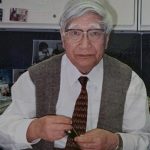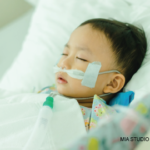Over the ensuing decades, the Japanese birthrate continued to fall, yet the incidence of KD continued to rise, both in Japan and here in North America.9 Despite considerable investigative efforts, the cause of KD remains unknown. Recently though, a few tantalizing clues have emerged.
Researchers including Jane Burns, MD, professor in residence at the University of California, San Diego, spotted a trend: Cases were sharply seasonal, peaking in the winter and early spring, and again in early summer, which suggested that an environmental factor could be involved.10 What might that be? Some fairly sophisticated climatological pattern analyses observed that when the dominant jet stream winds blew from central Asia across Japan, the number of Kawasaki’s disease (KD) cases skyrocketed. In fact, all three major outbreaks in Japan had followed this pattern, which was also evident in the normal disease seasons. However, when the winds shifted to blow from the Pacific, the number of cases dropped.11 And when winds from central Asia made their way to Hawaii or California, cases spiked there, too. Although intriguing, this theory remains just that, a theory. For now, the etiology of KD may truly be blowin’ in the wind.
Find That Needle in a Haystack
And then there are those critically ill patients whose fever and accompanying clinical features strongly imply infection but despite countless cultures of various bodily fluids and tissues, there is no confirmation of a cause. These cases often reach an alarming dead end with few remaining viable therapeutic options, especially after multiple antibiotic regimens have failed to provide benefit.
Such was the case recently when our rheumatology consult service—led by one of our intrepid fellows, Kevin Wei, MD, PhD—was helping manage a febrile, middle-aged man with a history of seronegative RA who was experiencing a spiral descent that included worsening heart disease, blood culture negative endocarditis and, to top it off, acute bilateral uveitis, myositis and orchitis. The reams of lab test results led the team nowhere; diagnoses, mostly infectious and autoimmune, were proffered, but despite several courses of empiric antibiotics there were few tangible benefits. A series of heroic cardiac and ophthalmologic surgeries yielded tissue specimens that seemed to be bound by vows of secrecy. Although his excised mitral valve tissue had all the pathological trappings of an infectious endocarditis, all studies, including polymerase chain reaction (PCR) testing, returned negative. A diagnostic cul-de-sac.
When it seemed that every available option had been exhausted, there was just one remaining card to play, the medical equivalent of a Hail Mary football pass. 16S PCR is a novel, costly (approximately $50,00012), new form of metagenomic deep sequencing (MDS) that has been developed based on some of the whirlwind advances in sequencing technology and bioinformatics made in recent years. Literally overnight, MDS has made an unbiased deep sequencing approach an increasingly feasible method for rapidly interrogating all the genetic material contained in a tissue sample.13


